


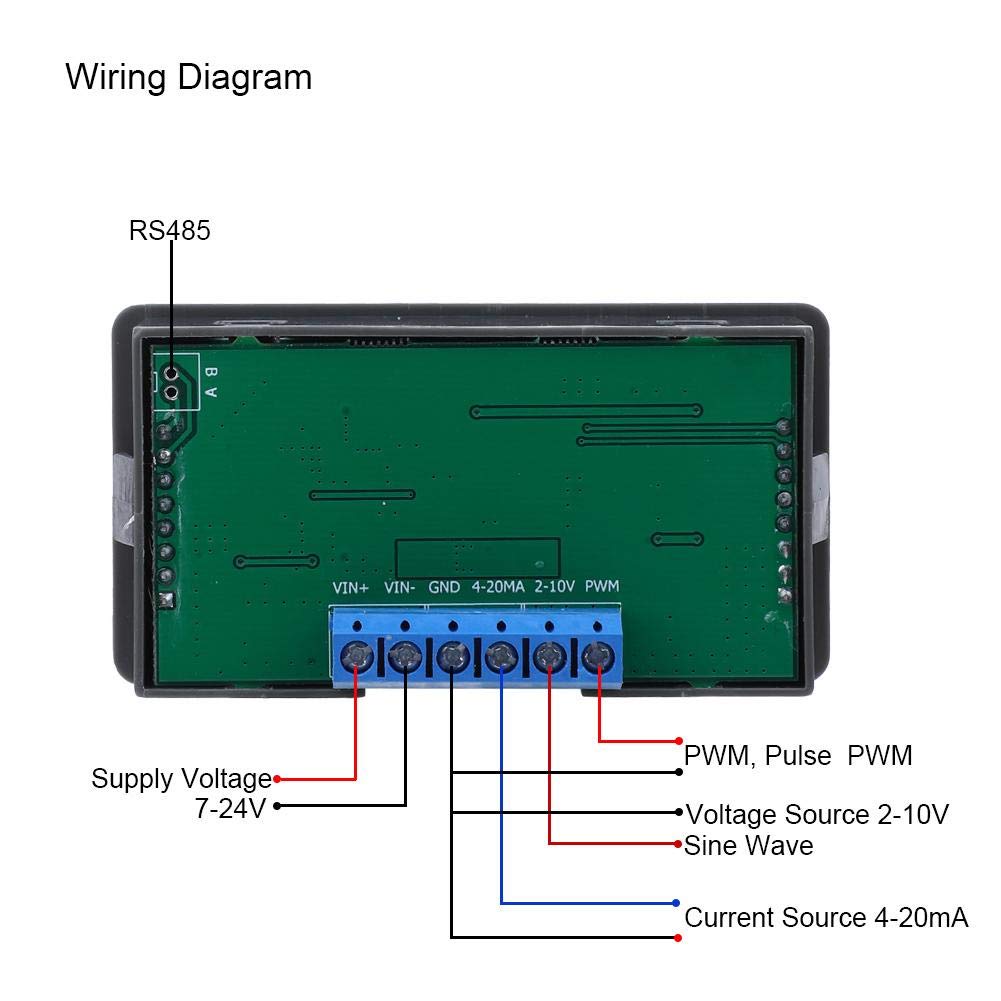
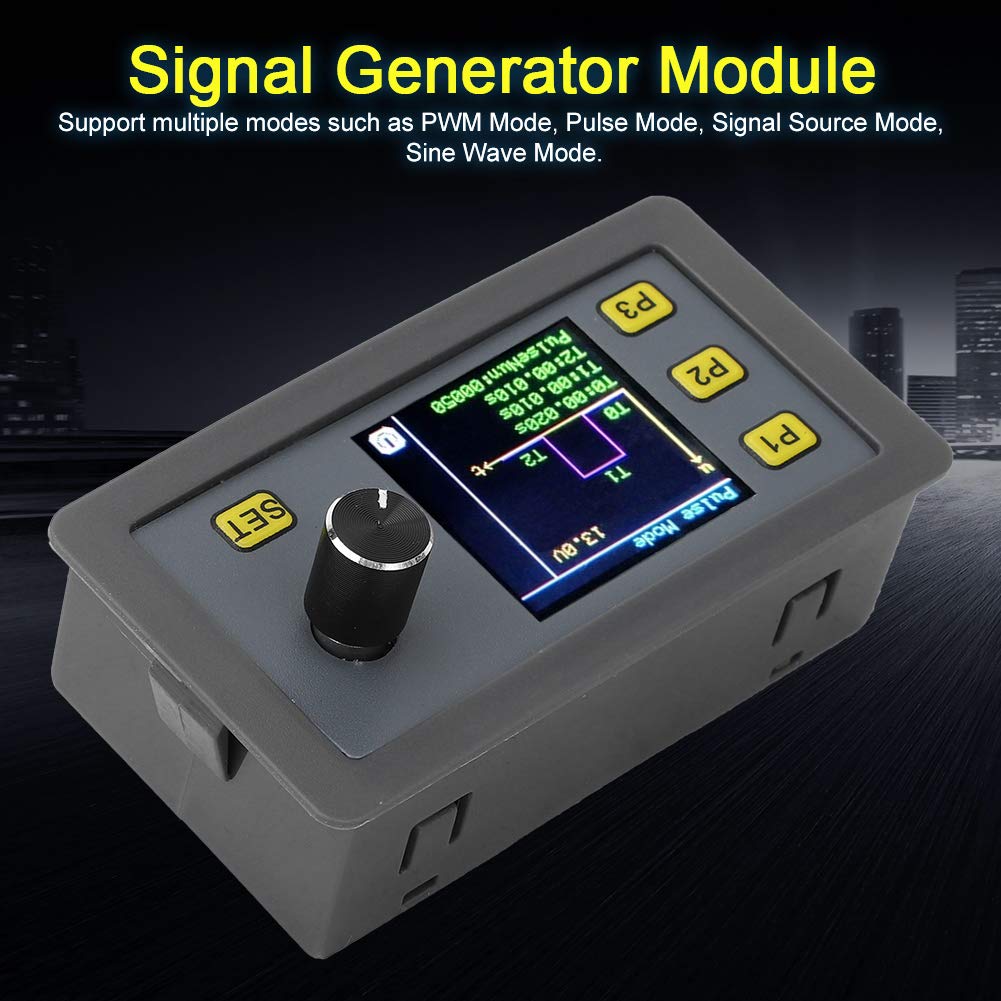
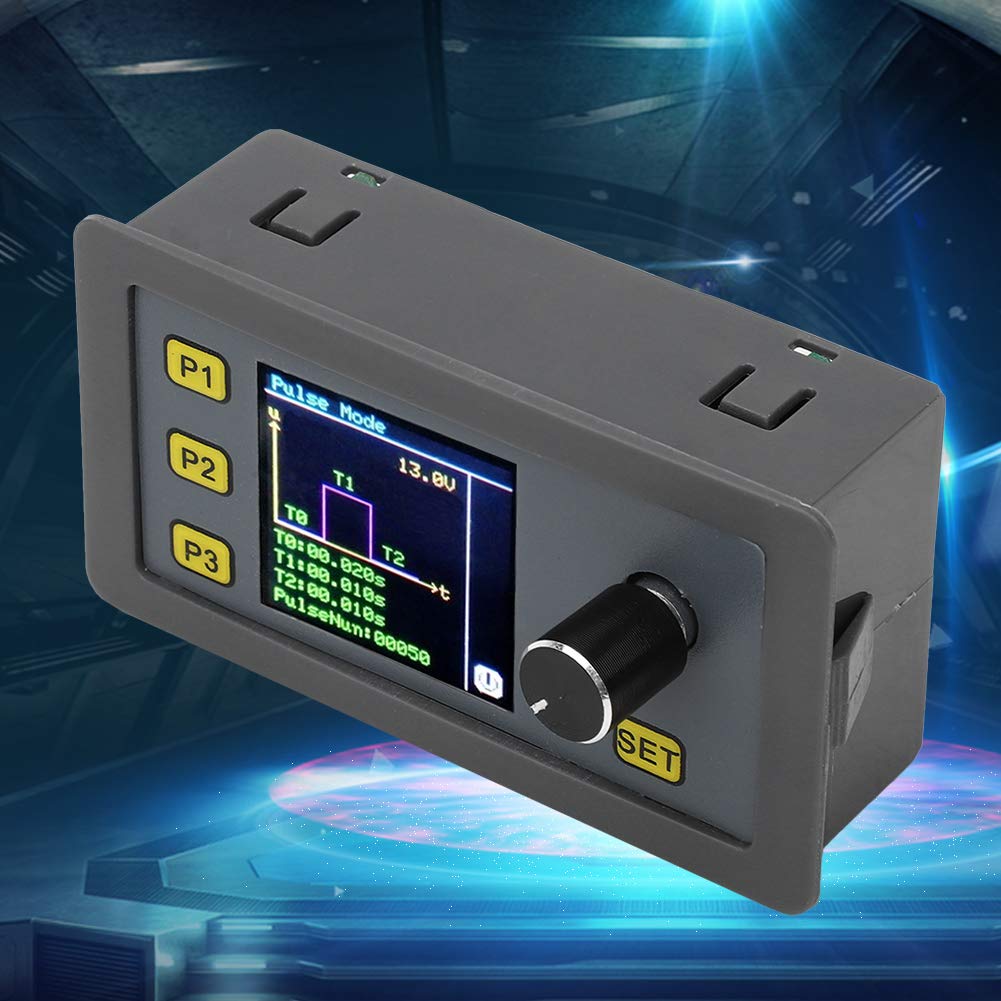
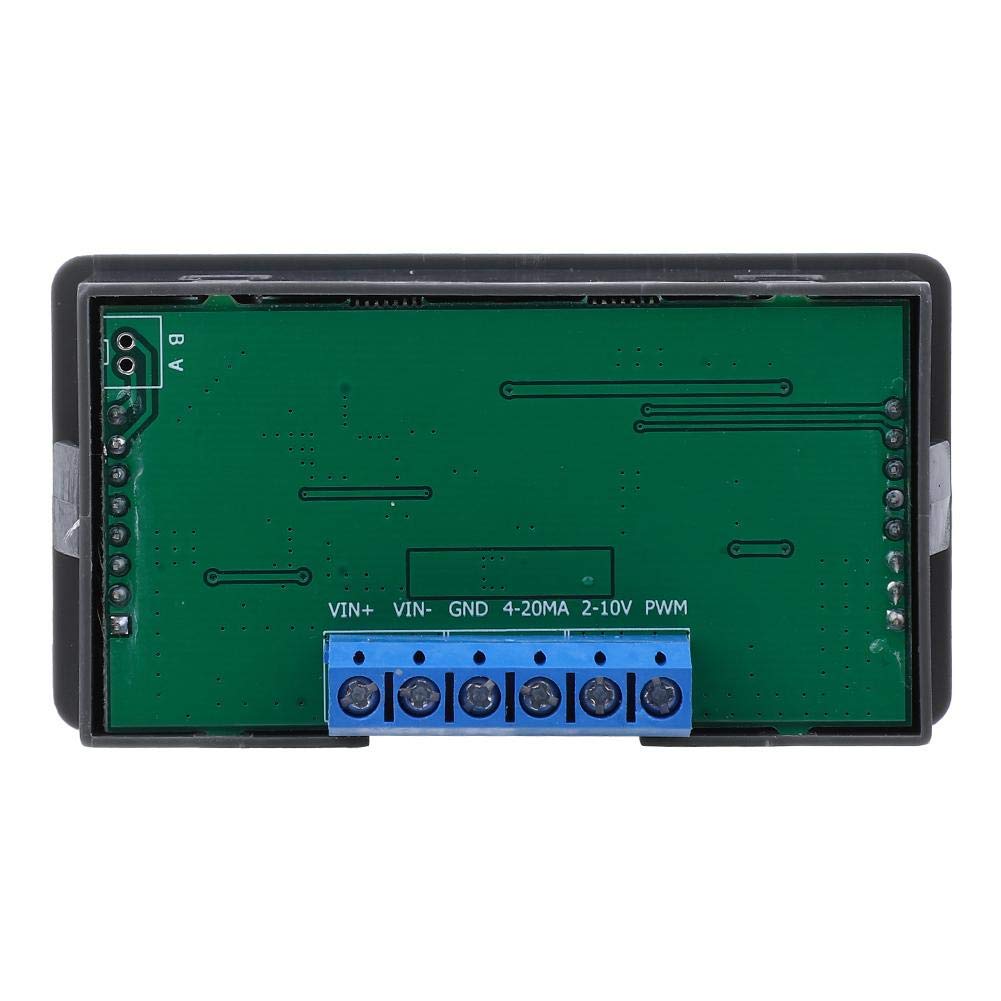
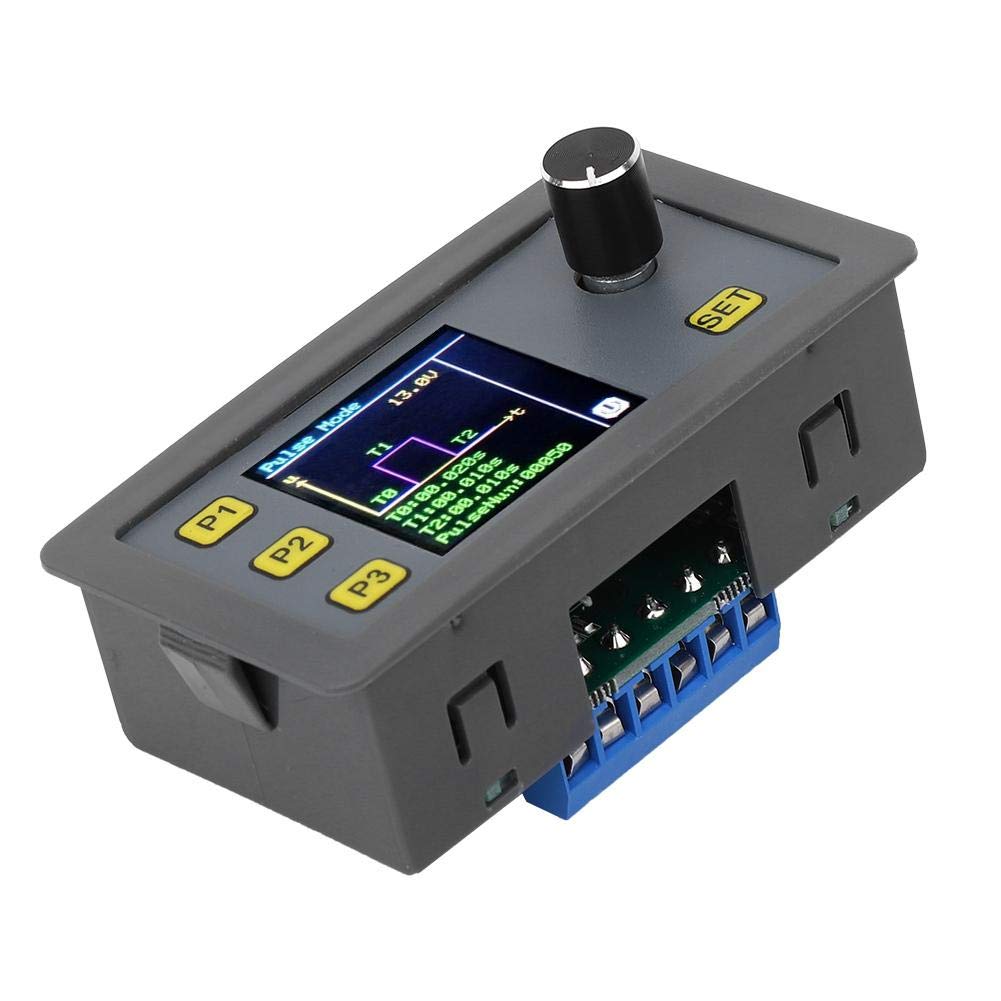

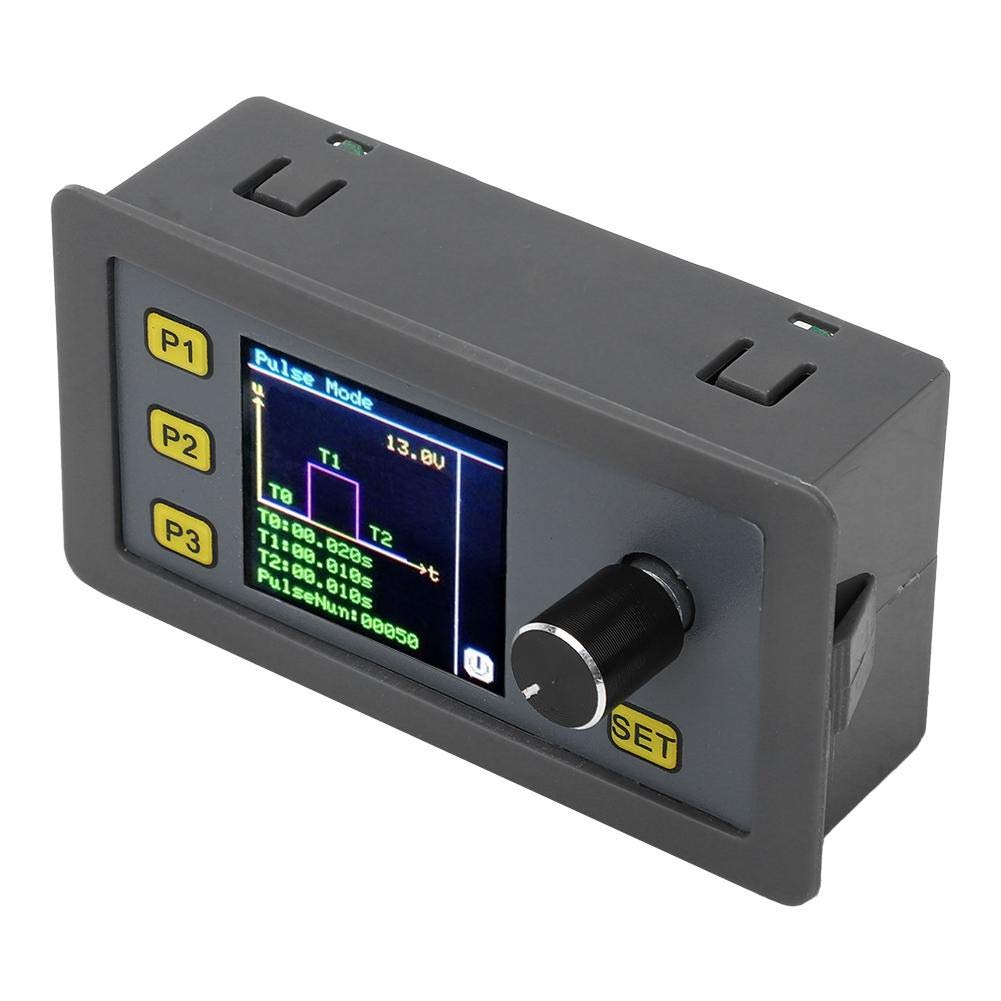
🔧 Unleash Your Creativity with Precision Control!
The YWBL-WHWSFG-06 PWM Pulse Adjustable Module is a versatile function generator designed for professionals seeking precision in voltage, frequency, and duty cycle adjustments. With a user-friendly LCD display and multiple operational modes, it caters to a wide range of applications while maintaining a compact and lightweight design.
| Manufacturer | YWBL-WH |
| Part Number | YWBL-WHf4iyuo1s7n |
| Item Weight | 1.76 ounces |
| Finish | Finish |
| Material | Material |
| Power Source | PowerSource |
| Installation Method | InstallationMethod |
| Item Package Quantity | 1 |
| Spout Height | 1 Centimeters |
| Included Components | inc |
| Batteries Included? | No |
| Batteries Required? | No |
P**R
Good product as advertised
Good product as advertised
D**K
It works for pulse mode if you mod it.
I was looking for some accurate easy to use timers to replace a board full of 555 timers to cycle an air cylinder and apply a pulse during the cycle. The 555s were working but not user friendly and as accurate as these are. For my application they are working well and produce accurate timing pulses. To use them you need to be able to trigger them and unfortunately there are no external connections to do that. Instead, they trigger by pressing the adjustment knob. As it turns out, the knob contacts short a 3.3v line to ground which starts the cycle. So I brought out these lines and added an open collector npn transistor to trigger the timers. This works well but also has the side effect that pressing the knob will also start things - perhaps when you don’t want to. So be aware that this option still exists unless you deal with it.So why is there a switch on the knob? Well, besides triggering the timers, it’s also used to set the timing. If you go into settings and press this while setting a timer interval, the cursor will shift to the seconds setting so that you can set those numbers. Since you’re in the setting mode, it won’t trigger that timer, but if multiple units are in parallel it will trigger other timers. I get around this by putting all timers in set mode so none will trigger. After I’m done making my changes, I take them all out of set mode.Once the timers are set, they are very accurate according to my Rigol scope. I like that you can accurately set up to 59.999 second intervals with ms precision. I like the digital display and its graph to remind to which interval you’ve setting. I like that you can set the number cycles or free run (cycle n=0) For my diy application this works great and sure beats the 555s board I used. So far so good as long as the setting knob and everything else keeps working. I have not tried any of the other modes so I cannot comment on them.
A**R
NO MANUAL OR INSTRUCTIONS
NO MANUAL OR INSTRUCTIONS PROVIDED WITH THE UNIT
E**Y
Buen modulo
Llego bien envalado y funciona bien
S**U
this is great! useful for many occasions.
Used this to test a BLDC motor for a BERD Air pump build and needed to validate some PWM settings . Adjustments were easy and it's feature rich. now im tempted to print an enclosure for it with the appropriate ports
J**T
Excelente producto
Compacto, muy bonito acabado y practico. Muy funcional para trabajos escolares y profesionales de mecatrónica
B**E
Works well (if you can figure out how it works)
Powering it up and tinkering with the PWM settings was straight-forward. However, with zero documentation to be found, I was scratching my head trying to figure out how to modify the integer portion of the PWM frequency; by default you're editing the decimal portion, which would take 1000 turns of the encoder to change the integer portion by one. So just when I was prepared to spend a whole evening turning that knob till I either reach my destination of 30 kHz or develop carpal tunnel, I read another review by a kind customer who gave the secret: you have to press down on the encoder knob to change the edit portion to be the integer. So far so good. But when I hooked up my oscilloscope there was no output. Again, with no documentation it wasn't obvious but I finally accidentally stumbled upon the reality that the device will only output the PWM signal when A) you're not editing any fields (press SET until everything is green), and B) press the encoder knob. A little icon in the corner will turn red indicating that it's outputing something. That's when it magically appeared on my scope.So all things considered, I'll take away one star for the lack of documentation, but I was happy with how simply it worked aside from those two mysteries I had to tackle first.
R**N
Better than expected.
Mine came in a small unpadded box inside a bubble wrap envelope. The bubble wrap has a 6 inch slash through it, but miraculously, the unit was undamaged. I suppose it was packed well enough IF you trust your courier not to slice or crush small itemsTested against my fluke179: Frequency was right on at 25.00Hz and 500Hz. Volts was within 10mV from 2V to 10V.mA was 0,13mA low across the range. ( I haven't explored adjusting) . It only acts as a mA source. It can't simulate a 2 wire 4-20 transmitter. The user interface is easy to figure out. Some of the display text is about as small as can be.I wouldn't put this into industrial or calibration service, but for a light-duty function generator for functional tests, it's great value if it arrives intact.
P**L
Falls short of expectations
The unit is rather noisy, at least the one I received. In the lower frequency range, under 500hz, a high pitch frequency is modulated over it.
Trustpilot
1 week ago
1 month ago